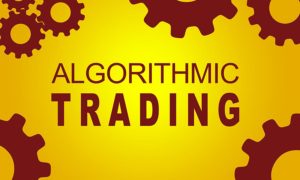Automated trading is an approach that is faster owing to the usage of the automated system for executing trade orders. With your expertise in the trading domain, you can automate your trading approach instead of manually carrying the trade execution. In this blog, you will learn all about knowing and getting started with an automated trading approach.
The blog covers:
- What is automated trading?
- History of automated trading
- Working of automated trading
- Difference between automated trading and algorithmic trading
- Difference between old and new brokerage model
- Example of automated trading and algorithmic trading
- Prerequisites for practising automated trading
- Resources to learn automated trading
- Steps to building an automated trading system
- Benefits of automated trading
- Drawbacks of automated trading
What is automated trading?
Automated trading uses computers to generate trading signals, send orders and manage portfolios using algorithms with or without human intervention. Sophisticated electronic markets/platforms are used by the algorithms to trade in a similar fashion as done in electronic trading.
History of automated trading
Speaking about how automated trading began and went on to become so useful for traders, let us see one by one the journey of “automated trading” from the beginning:
- It was in the year 1949 when Richard Donchain first introduced the concept of an automated trading system. He made use of a set of rules for buying and selling the financial markets’ assets.
- Then, it was in the 1980s that rule-based trading became popular amongst traders as famous traders such as John Henry and the likes started using rule-based trading strategies.
- It was in the mid-1990s that the improvised versions of automated stock trading models became available for purchasing. These trading models also raised the accessibility for retail investors in the financial markets’ trading domain. However, in today’s time, the automated trading system is taking care of assets across the globe.
Stay tuned for Part II in which Chainika Thakar will present the difference between automated and algorithmic trading.
Visit QuantInsti for additional insight on this topic: https://blog.quantinsti.com/automated-trading/
Disclosure: Interactive Brokers
Information posted on IBKR Campus that is provided by third-parties does NOT constitute a recommendation that you should contract for the services of that third party. Third-party participants who contribute to IBKR Campus are independent of Interactive Brokers and Interactive Brokers does not make any representations or warranties concerning the services offered, their past or future performance, or the accuracy of the information provided by the third party. Past performance is no guarantee of future results.
This material is from QuantInsti and is being posted with its permission. The views expressed in this material are solely those of the author and/or QuantInsti and Interactive Brokers is not endorsing or recommending any investment or trading discussed in the material. This material is not and should not be construed as an offer to buy or sell any security. It should not be construed as research or investment advice or a recommendation to buy, sell or hold any security or commodity. This material does not and is not intended to take into account the particular financial conditions, investment objectives or requirements of individual customers. Before acting on this material, you should consider whether it is suitable for your particular circumstances and, as necessary, seek professional advice.


















